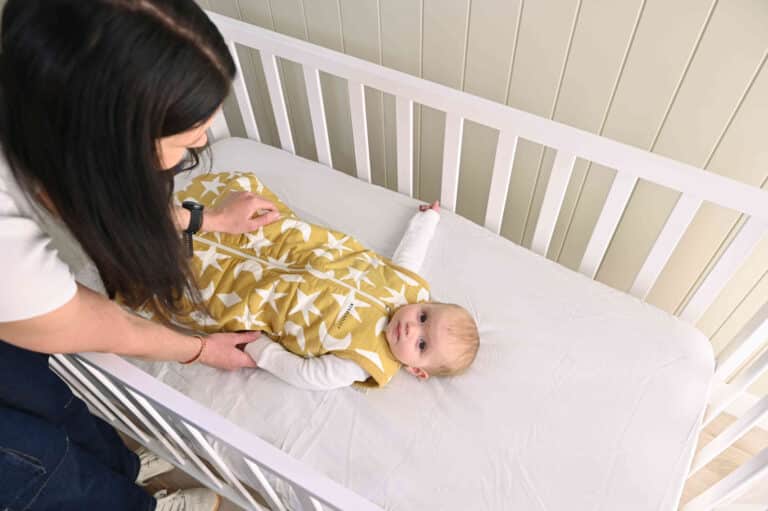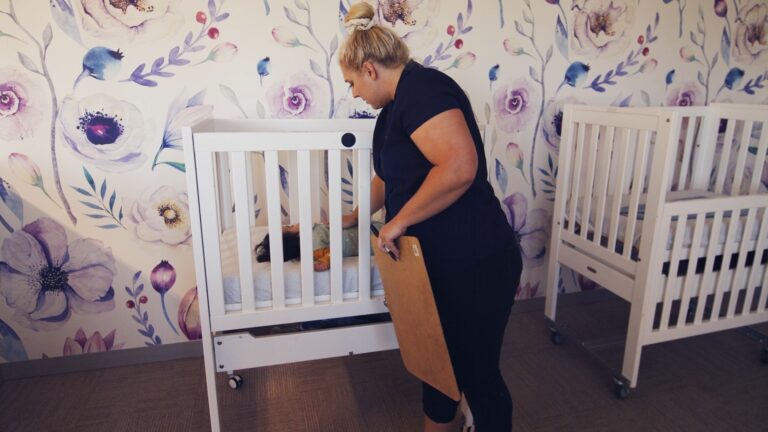Slings and baby-carriers can be dangerous for your baby if worn incorrectly or if the wrong type of sling is used.
How to safely use slings and baby carriers:
- Make sure the baby’s face can be seen and their nose and mouth are not covered or pressed against fabric or the wearer’s body.
- Make sure baby’s back is supported. Their tummy and chest should be against the wearer’s body.
- Make sure baby’s chin does not rest on their chest.
- Regularly check the baby. You should be able to see baby’s face at all times by simply glancing down.
- Follow the instructions for the sling.
- Do not use products that are cocoon-like or womb shaped.
Injuries can occur by baby falling from the sling if the carrier trips or falls, if the product malfunctions or breaks, or the baby slips out.
TICKS checklist:
T: Tight:
Slings should be tight enough to hug baby close to you.
I: In view at all times:
You should always be able to see baby’s face by simply glancing down.
C: Close enough to kiss:
By tipping your head forward you should be able to kiss baby on the head.
K: Keep chin off the chest:
A baby should never be curled so that their chin is resting on their chest as this can restrict their breathing.
S: Supported back:
The baby’s back should be supported in a natural position, so their tummy and chest are against you.
Did you find this helpful?
Good job! Please give your positive feedback
How could we improve this post? Please Help us.




